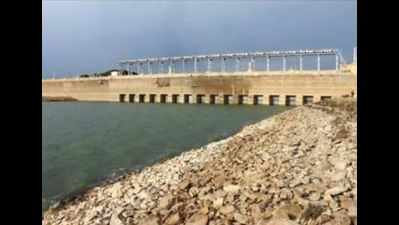- News
- City News
- bengaluru News
- How Bengaluru, Chennai are watered by Cauvery river
Trending
This story is from October 19, 2016
How Bengaluru, Chennai are watered by Cauvery river
Bengaluru and Chennai depend mainly on the Cauvery for their drinking water requirements. For both states, the river has become a lifeline.

Bengaluru draws 23.1 tmcft of water a year from Cauvery
BENGALURU/CHENNAI: Bengaluru and Chennai depend mainly on the Cauvery for their drinking water requirements. For both states, the river has become a lifeline.
More than half a century after Bengaluru looked towards the Cauvery to fulfil its drinking water needs, close to 60% of the Tech City's thirst is slaked by water from the river nearly 100km away .It's not just Bengaluru but also Mysuru, Mandya and 48 other towns and 600 villages that depend on the Cauvery for drinking water. Bengaluru city alone draws 23.1 tmcft of water a year.
Across the border in Tamil Nadu, at least 1.7 crore people in the state -more than 20% of its population -in 19 districts are served by water supply schemes that draw water equivalent to 17 tmcft every year from the river. The state's capital Chennai gets nearly 2.5tmcft water through the Veeranam project completed in 2004.
The numbers point to how the two states -and their capital cities, which are far from the river -have grown and expanded by drawing from and becoming entirely dependent on one river. “The Cauvery , which originates in Kodagu, is the only river in the country that has clocked the highest water utilisation rate from British times,“ said a Karnataka state official. “The Cauvery catchment area in Karnataka is 34,273 sqkm and, of late, there has been an increase in exploitation of water by the farmers because of sugarcane and paddy cultivation, both water-intensive crops.“
But more than irrigation, it's the rapidly increasing population and changes in land use that have depleted the river. In Bengaluru, population has grown 47% in the last four decades while water bodies have shrunk by 80%.
“About 200 to 400 such families move into Bengaluru every day and their common requirement is drinking water. Though BWSSB supplies 1,700 mld (including 300 mld of ground water) every day, the demand is over 2,000 mld per day . Where will the water come from?“ said S Krishnappa, former engineer-in chief of Bangalore Water Supply and Sewerage Board.
What has complicated the situation is the falling groundwater table and low rainfall in Kodagu, the river's birthplace, because of reckless destruction of fragile ecology . Retd Col Muthanna of Save River Cauvery Foundation said: “It is estimated that crores of people and 600 industries are dependent on Cauvery river. If more trees are felled for road and power projects, the river will bear the brunt.“ In Tamil Nadu, the Cauvery contributes 50% of the total surface flows in all rivers in the state. There has been rapid growth in the number of drinking water schemes that bank on the Cauvery , which runs for about 416km in the state before joining Bay of Bengal, in the last two decades.The deteriorating groundwater table and destruction of storage tanks and reservoirs across the state have meant the state has become more dependent on Cauvery for its drinking water needs.
“The problem in water supply arises when there is a shortfall in river flow and poor spells of rain.Unless Mettur reservoir gets full storage, the wetting of river bed becomes difficult and the combined water schemes get hit. The civic bodies then rely on local sources to augment the supply ,“ said a TN government official. “Excessive sand mining along the bed is also endangering the life of the river,“ said a retired official of Tamil Nadu Water Supply and Drainage Board.
The most powerful and poignant comment on the Cauvery problem came from India's best-known water conservationist Rajendra Singh when he said: “The real threat is to Cauvery river itself. It has been treated as a commodity .“
End of Article
FOLLOW US ON SOCIAL MEDIA










